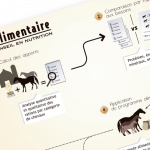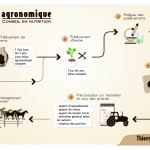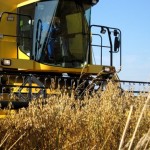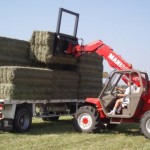Hay
For more than 15 years,
we have been specialised in the selection and distribution of a
particular hay, that meets the detailed requirements of the thoroughbred racehorse industry. Having a good nutritional balance with excellent palatable properties (green colour, crunchy and an attractive nose), the Crau hay cultivated in the south of France meets all these requirements.
Its’ production in these exceptional natural conditions derives from a certain « know how » that has been passed down from one generation to the next. Despite originally having poor and arid land in this area, the Crau farmers have created a unique soil, thanks primarily to an effective irrigation system and the planting of poplars as windbreakers, creating rich natural meadows.
The making of the meadows
Originally the land was uncultivable, being full of rocks and stones. So as to make it productive, the land was firstly cleaned, the stones taken out and then ploughed. Through the years the meadows have developed thanks to the creation of canals.
The irrigation system
So as to compensate for the lack of water in the region, the meadows are regularly flooded from April to September. This system of canals and dams, fed by the river « Durance » brings a water very rich in lime thus creating a fine light soil, rich in calcium and very fertile.
The climatic conditions
Were it not however, for the fortune of having fantastic climatic conditions, the production of Crau hay would not exist. The Crau region is situated to the east of the Camargue, at the mouth of the Rhone, where the sun is strong creating hot dry summers and mild winters, thus favouring the development of plants and their harvesting. With this Mediterranean climate, the rainfall is very low (approx. 600 mm per year). This lack of water however, is compensated by the irrigation system covering the whole cultivated area, which nears 12,000 hectares. Added to this, the influence of the MISTRAL, a strong dry wind coming from the north and blowing down the Rhone valley, optimises the drying conditions after cutting.
The botanic composition
The botanic composition of Crau hay is very diversified. Growing on purely natural meadows, it
consists of between 30 and 50% of grasses (cocksfoot, fescue, fromental, ray grass) providing a portion of the horses’ daily cellulose level. Equally found are between 25 and 35% legume plants (red and white clover) renowned for their richness in good quality protein, calcium and vitamine A. The remainder of between 25 and 30% consists of various other plants (dandelion, plantain)
The harvest
The first cut is normally done in the middle of May. Per year three cuts are done, but only the first two cuts meet the nutritional requirements of horses. With returns per year close to between 7 and 8 tonnes a hectare, the production of Crau hay benefits from having a quality controlled system and proof of authenticity, thus guaranteeing its’ origin and quality.
Depending on the cut, the digestibility of the hay varies slightly. Thus, it is important to evaluate the ratio of stem to leaves depending on one’s requirements. In the first cut, the stems are long, they have a tendency to be tough which increases the amount of cellulose. On the other hand, during the vegetative cycle, the proportion of leaves decreases. Hence, the digestibility falls rapidly. The second cut tends to be the opposite to the first, having more leaves than stems. This ratio gives a better digestibility to the hay.
Nutritional value of Crau hay
Crau hay is prized for its’ richness in minerals especially calcium, magnesium and sodium, sometimes containing twice as much as other good ordinary hays. The energy and nitrogen values are similar to that of other good hays. Finally the brute cellulose is low compared to other hays, allowing for an increase in digestibility. Because of the large variety of the flora growing in these natural meadows, Crau hay is of excellent quality. It is very palatable, is easily digested and has a great nutritional composition. For these reasons we can guarantee a unique quality hay for the thoroughbred horse.





